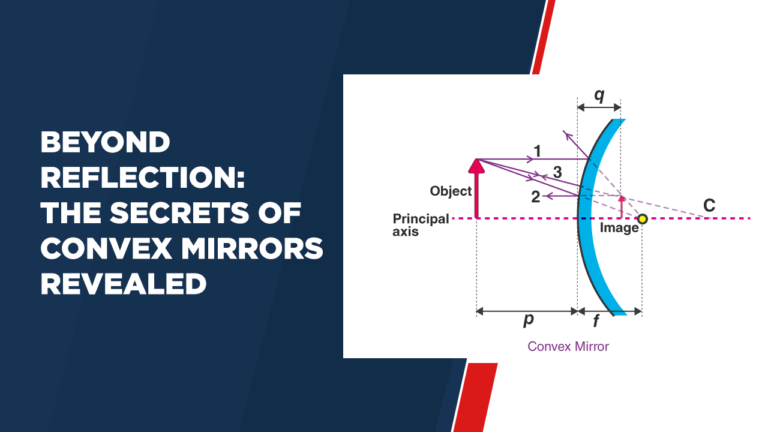Beyond Reflection: The Secrets of Convex Mirrors Revealed
Introduction
Mirrors have always fascinated humanity because of their ability to reflect light, allowing us to see ourselves and our surroundings more clearly. Among the different types of mirrors available, convex mirrors stand out because of their special properties and applications; Here, we explore their secrets—their uses, image creation processes, plus real-world examples.
Understanding Convex Mirrors
Convex mirrors have reflective surfaces that curve outward, so that rays of light become diffuse when reflected and spread outward when refracted. Unlike concave mirrors which focus light rays to a central point, convex mirrors spread them outwards – leading to fascinating optical effects and practical applications.
Image Formation by Convex Mirrors
Convex mirrors are quite different from their concave counterparts when it comes to image formation. The reflected rays never actually converge to form a real image, but instead appear to diverge from a virtual focal point located behind the mirror; Here, the spectrum of reflected rays converges at their point of intersection and gets scattered away.
Convex Mirror Ray Diagram
[Convex Mirror Ray Diagram Image]
A ray diagram can help provide more insight into the image generation process. Draw three principal lines representing the incident light: one parallel to the mirror axis (ray 1), another directed toward the focus point (ray 2), and a third directed directly toward the center of the mirror (ray 3). After reflection these rays appear to move away from their virtual focal points, producing a smaller, erect, virtual image.
Uses of Convex Mirrors
- Security and Surveillance
Convex mirrors have become indispensable tools in security and surveillance applications. Strategically installed around stores, parking lots and intersections, they provide users with a wider field of vision that helps monitor the entire area in real time and detect threats or shop theft incidents more quickly. Puts
- Vehicle Side Mirrors
Vehicles generally use convex side mirrors which provide a wider view of what is behind their vehicle, thus reducing blind spots and increasing driver safety. Although these mirrors produce smaller images overall, their increased field of vision makes this tradeoff worthwhile.
- Decorative and Architectural Elements
Convex mirrors serve much more than their functional purposes; They also add ornamental and architectural value. Used in interior design projects, convex mirrors create the illusion of expanded space while adding elegance and sophistication.
Convex Mirror Examples
- Security: Retail Environments
In retail environments, convex mirrors are strategically placed to eliminate blind spots, making it easier for store personnel to monitor customer activity and prevent theft.
- Traffic Safety: Intersections
At busy intersections, convex mirrors increase safety by providing drivers with a wider view of oncoming traffic from multiple angles, thereby reducing the risk of collision.
- Home Decor: Hallways
Convex mirrors placed at hallways or entryways serve both functional and aesthetic purposes. They reflect light, making small spaces appear larger, and contribute to the overall design scheme.
Conclusion
Convex mirrors, with their unique optical properties and diverse applications, have a significant impact on various aspects of our lives. From enhancing safety and security to adding a touch of sophistication to our surroundings, these mirrors continue to reveal their secrets and captivate our imagination. Understanding their image formation and practical use allows us to fully appreciate the role of convex mirrors in our modern world.



